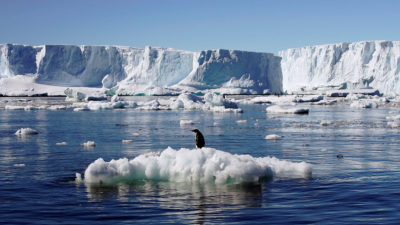Last year will go down in history as the year when the planet’s atmosphere broke a startling record: 400 parts per million of carbon dioxide. The last time the planet’s air was so rich in CO2 was millions of years ago, back before early predecessors to humans were likely wielding stone tools; the world was a few degrees hotter back then, and melted ice put sea levels tens of meters higher.
“We’re in a new era,” says Ralph Keeling, director of the Scripps Institution of Oceanography’s CO2 Program in San Diego. “And it’s going fast. We’re going to touch up against 410 pretty soon.”
There’s nothing particularly magic about the number 400. But for environmental scientists and advocates grappling with the invisible, intangible threat of rising carbon dioxide levels in the atmosphere, this symbolic target has served as a clear red line into a danger zone of climate change.
When scientists (specifically, Ralph Keeling’s father) first started measuring atmospheric CO2 consistently in 1958, at the pristine Mauna Loa mountaintop observatory in Hawaii, the CO2 level stood at 316 parts per million (ppm), just a little higher than the pre-industrial level of 280 ppm. 400 was simply the next big, round number looming in our future.
But as humans kept digging up carbon out of the ground and burning it for fuel, CO2 levels sped faster and faster toward that target. In May 2013, at the time of the usual annual maximum of CO2, the air briefly tipped over the 400 ppm mark for the first time in several million years.
…click on the above link to read the rest of the article…






